Recently I purchased a couple of cheap 365nm flashlights (or torches as we call them here in the UK) from AliExpress. I was rather dubious as to how well they'd work, but they were cheap enough it wouldn't be a big loss if they turned out to be useless. I was also encouraged by them selling both 365nm and 390nm versions - surely they wouldn't both actually be visible light, as otherwise why would they offer the two versions?
The two flashlights I bought were:
And I'm comparing against the UV flashlights I already own:
If you'd prefer a video version of this comparison, this can be found here: 5 ultraviolet flashlights compared.
The main thing I use a UV flashlight for is just to aid focusing my camera lens when taking UV photos.
I don't like using UV flashlights as the light source for the actual photos because the range of UV light you get from them tends to cover a limited band around 365nm, rather than the wider range of UV wavelengths you get with sunlight or Xenon flash. The beam of light also tends to be very concentrated, giving a spotlight effect. Of course, you can move them further back but then you get a large dropoff in light.
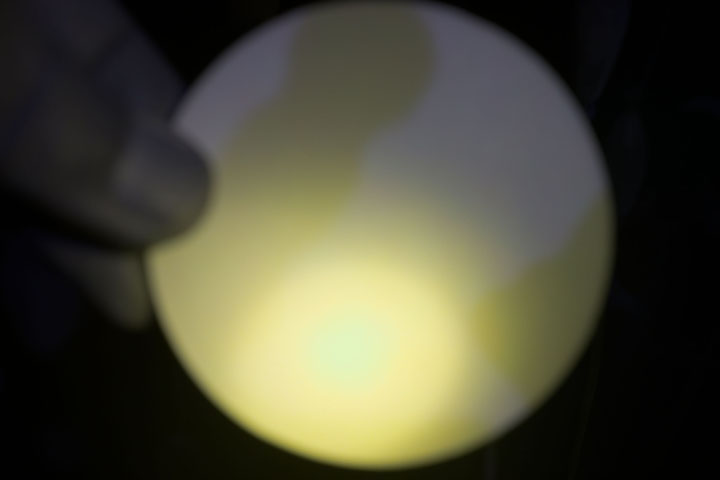
UV photograph of white balance target (PTFE disc), lit by 365nm flashlight. Note the area directly illuminated by the flashlight has a yellow colour cast while the surrounding area lit more by sunlight has a blue cast, making a 'correct' white balance almost impossible.
You can also use them for UV induced visible fluorescence photography, assuming the light is pure UV and you don't have any ambient visible light.

Photo of a buttercup flower - UVIVF + some visible light, lit by 365nm flashlight and natural light
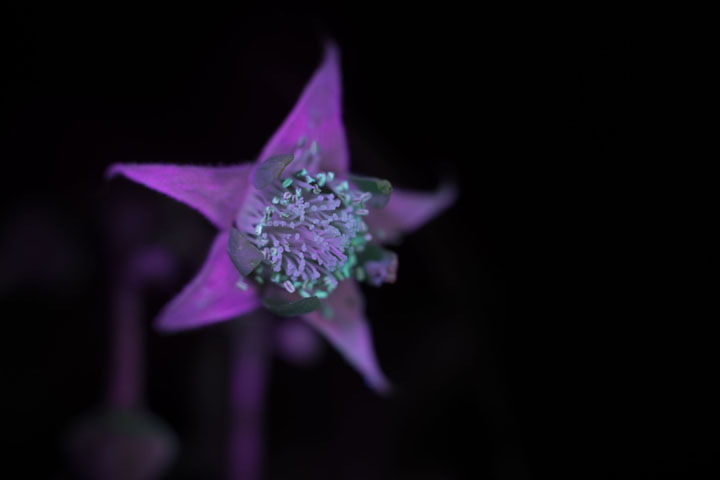
Photo of a raspberry flower - UVIVF + some visible light leak, lit by 365nm flashlight
In the following tests, the photos were all using my Full spectrum converted Canon R5 with an RF-EF drop-in filter adapter and the EL-Nikkor 63mm f/3.5 lens.
For the UV photos, a Baader U filter was placed behind the lens in the drop-in adapter, and exposure settings were f/5.6, 2s, ISO 100. The UV photos are of my UV colour checker. I'm including both the non-white balanced and white balanced versions. The photos were processed in Adobe Camera RAW using custom profiles for the white balanced images due to the extreme WB adjustment needed.
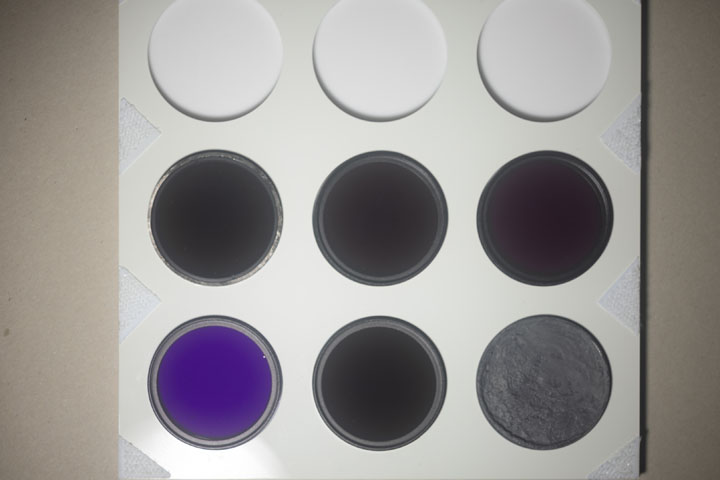
UV Colour Checker in visible light - main part is acrylic and should be blue in UV. Top row of holes is PTFE, which should be neutral in UV. Middle row is ZWB1-3, which should be yellow in UV. Bottom row is: ZB1, which should be transparent (showing white PTFE below) / slightly yellow in UV; HB700, which should be black in UV; and grey PTFE, which should be neutral in UV.
For the visible light photos, a Fotga UVIR cut filter was placed behind the lens in the drop-in adapter, and exposure settings were f/5.6, 1/4s, ISO 100. These photos are of a piece of PTFE (which does not fluoresce) on a card background. The purpose of the visible light photos is to see how much visible light the flashlight outputs. And also to look at the pattern or distribution of the light.
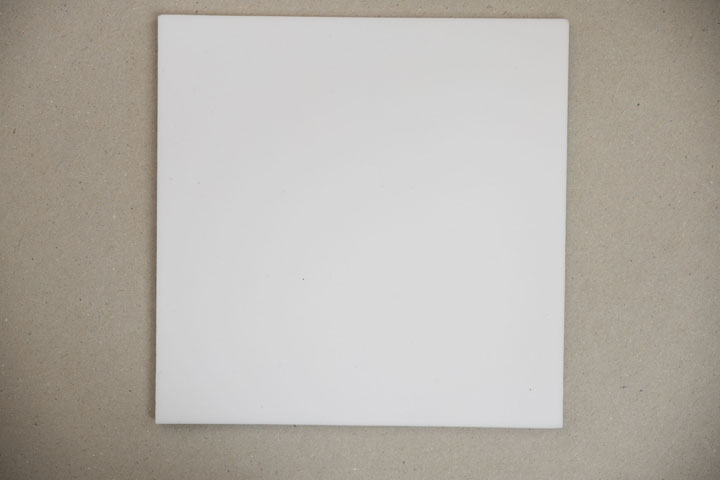
Square of PTFE on grey card background when photographed using natural light
AloneFire SV62 365nm
This is a very small flashlight and just takes a single AAA battery. It has dark glass on the front, probably ZWB2, designed to block visible light from the LED. It cost me $3.37 as part of a bundle deal from AliExpress.
Surprisingly it actually seems to give a pretty decent result in UV.
If we look at the visible light image we can see there is some visible violet light leakage, and that the light has a bright hotspot in the centre.
AloneFire SV108
This is larger than the SV62 but still pretty small. It has a built-in battery and charges via USB-C. Like the SV62, it has dark glass at the front. This cost me $2.40 as part of a bundle deal from AliExpress.
Again, we get a good result in UV, much to my surprise.
In visible light we get a much stronger, more concentrated hotspot compared to the SV62.
Convoy S2+
The Convoy S2+ is the UV torch I've been using for quite a long time now. This purportedly uses a Nichia 365nm UV LED, which at the time I bought this was far better than most other UV LEDs. It has clear front glass.
It takes the standard 18650 Li-ion battery. I think I paid around £25 for the flashlight from Banggood.
This gives a good result, but it is actually not quite as bright as the much smaller and cheaper AloneFire flashlights.
In visible we can see some violet light leak and a bright hotspot.
UltraFire WF-501B

Shutter speed adjusted to 1/200s to better show the light pattern
The UltraFire WF-501B was the first 'proper' UV flashlight I owned. I think it was about £50-60, this was before the much better Convoy S2+ UV flashlight was released. It uses an 18650 Li-ion battery. This came with clear front glass, I think it was before ZWB glass was really a thing.
The image this flashlight gives was too strongly coloured magenta for me to white balance properly. We can see it does not do a good job, and the ZWB1 filter in the UV colour checker is very dark. This is probably a 395 flashlight rather than 365nm.
It outputs so much visible light I had to adjust the shutter speed to 1/200s for the visible light test image to get a result that allows us to see the pattern of the light output. I would say the light distribution is fairly nice, it's just a shame the UV output is so poor.
Old cheap
I think this was my first 'UV' flashlight, the paint was originally plain black, but has faded to a warm-black colour. It has clear glass and unlike the other flashlights it uses a number of dome-type LEDs. I expect I bought this from eBay or Amazon for around £5-10, but it was a long time ago.
This has very little UV output, and like the UltraFire, the output is too magenta to white balance properly.
The flashlight does output quite a bit of visible light. It has quite an odd output pattern thanks to the multiple LEDs.
Conclusion
The Convoy S2+ is still a good UV flashlight. If you use other flashlights that use 18650 batteries, then this can be quite convenient.
The AloneFire UV flashlights are very good for the money and much much better than what you used to get from cheap UV flashlights.

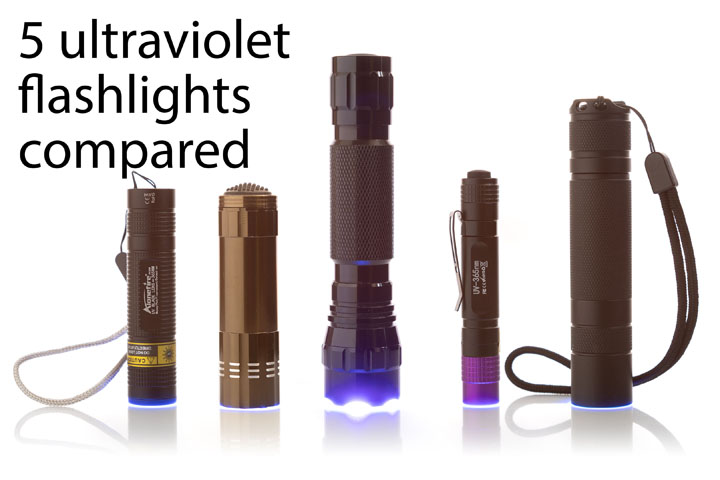
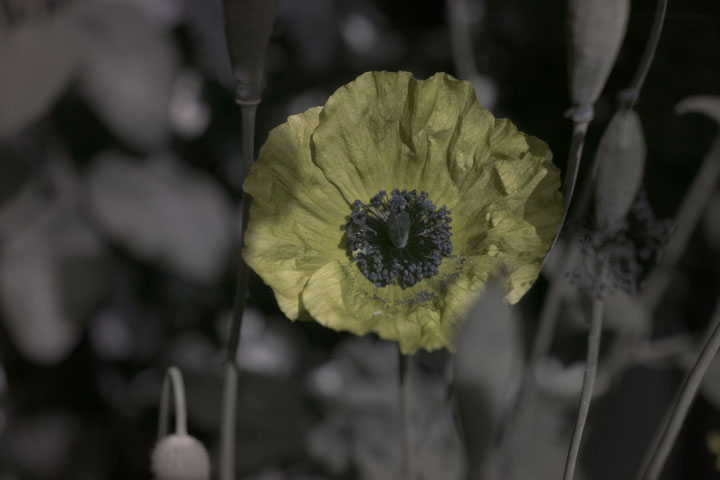

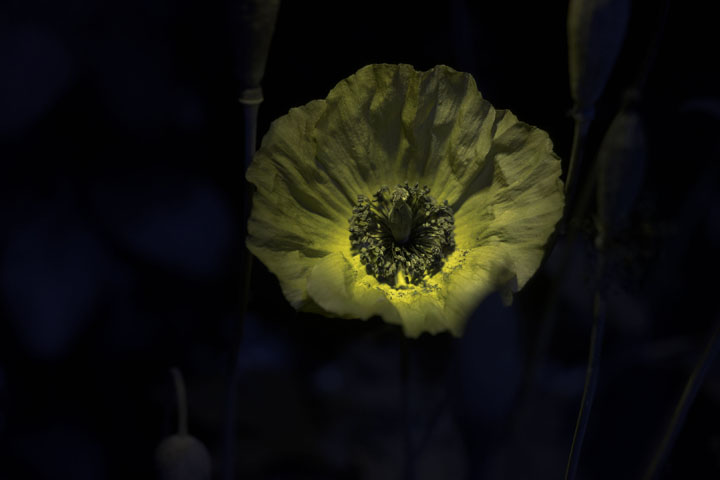
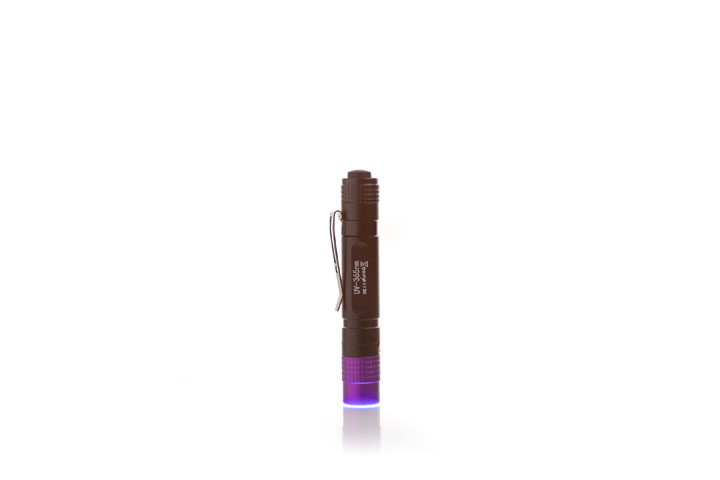


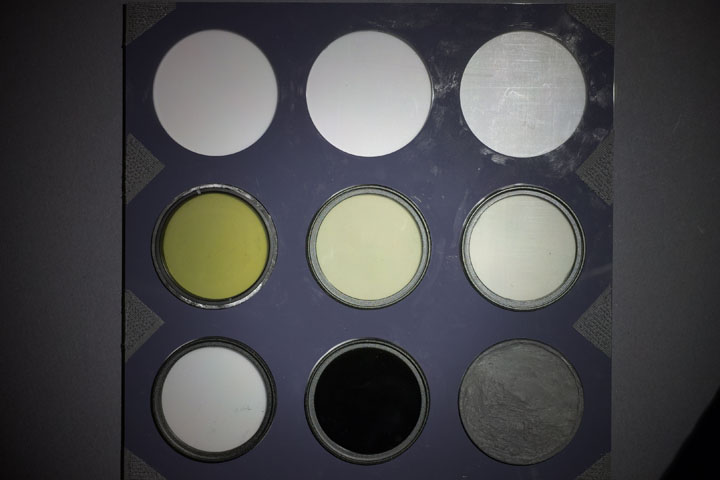



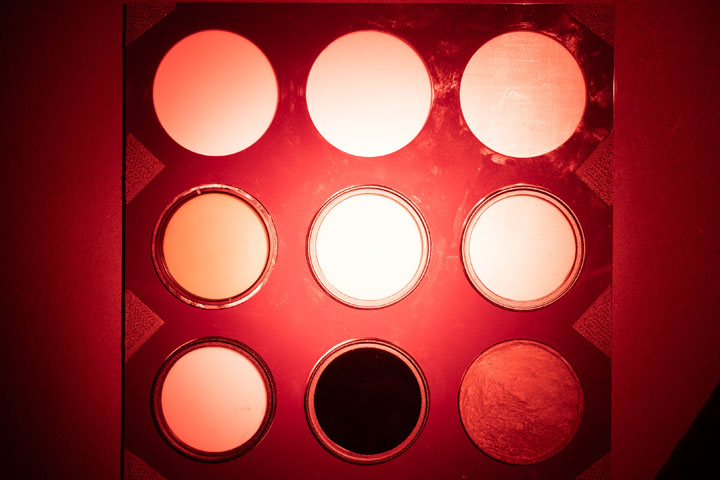
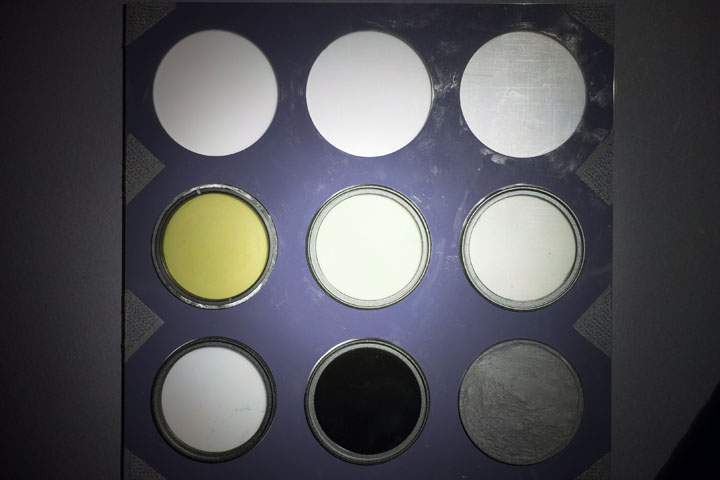

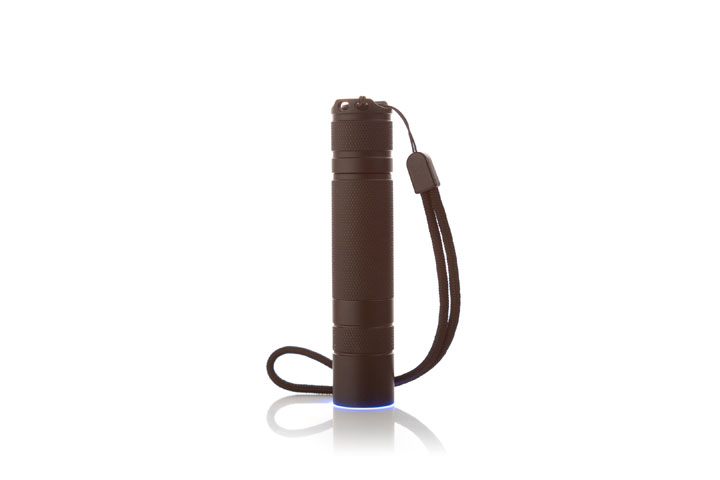


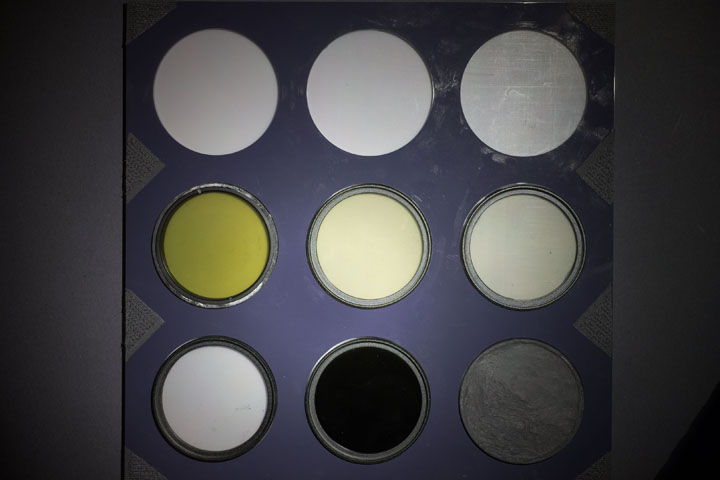

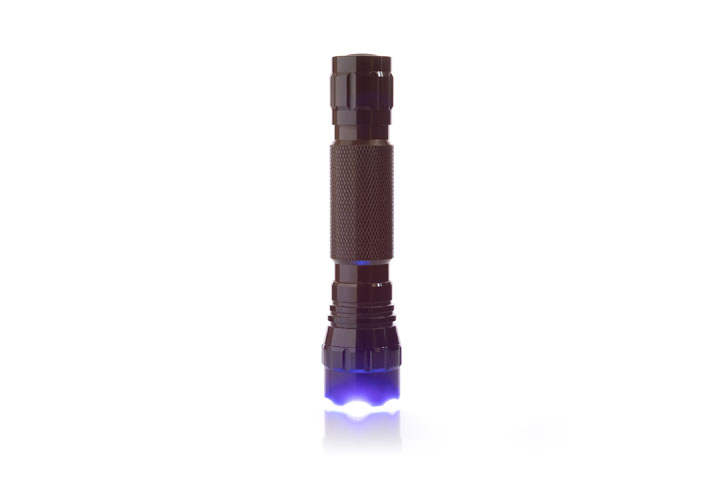


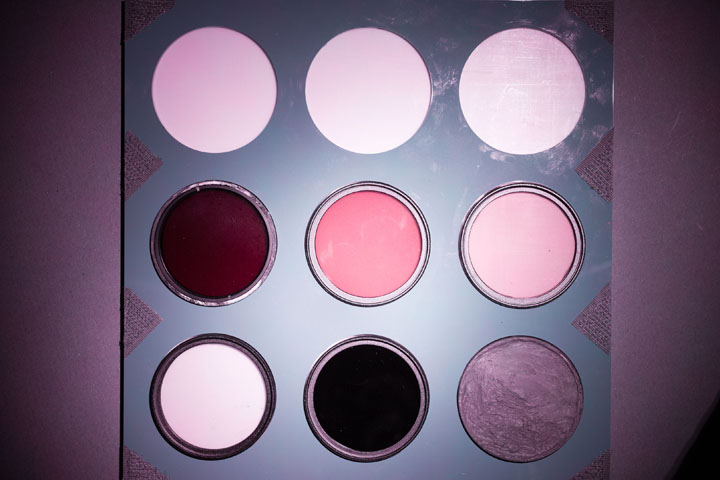

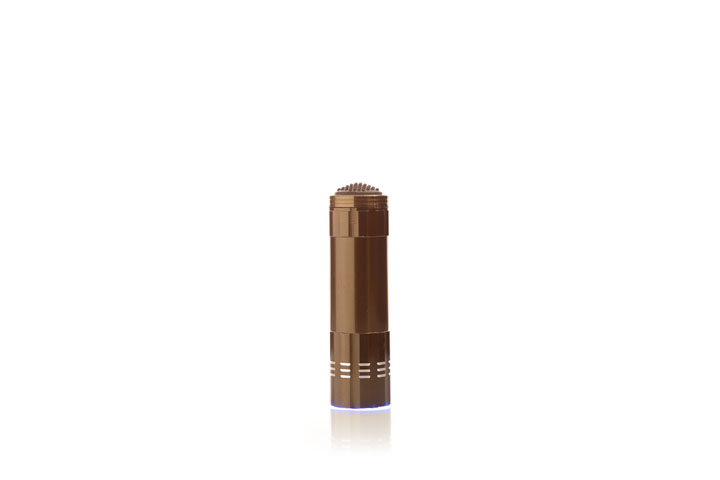


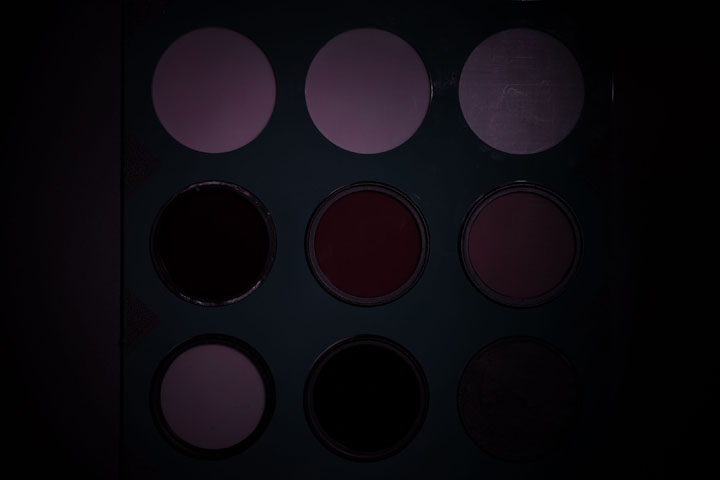

Leave a Reply